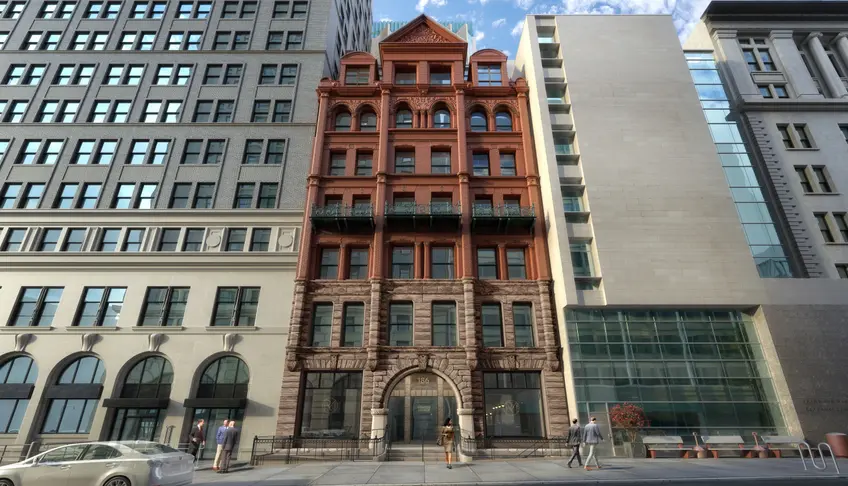 Restored facade and rebuilt floors enevisioned for 186 Remsen Street in Downtown Brooklyn (HOK via NYC Landmarks Preservation Commission)
Restored facade and rebuilt floors enevisioned for 186 Remsen Street in Downtown Brooklyn (HOK via NYC Landmarks Preservation Commission)
UPDATE 1/16/19: According to Brownstoner, the Landmarks Preservation Commission voted no action on an eight-story addition to stand behind the six-story structure at 186 Remsen Street. While community members and Landmarks commissioners alike were pleased at the prospect of seeing this beautiful building restored, there were concerns about how well the addition would fit in with the rest of the historic district. See the full story here.
New York City is fortunate for its wealth of well-crafted pre-war architecture that other cities would kill for, so much so that we often take our architectural gems for granted. This casual disregard has often led to the destruction and decline of our public realm. However, between the inception of the Landmarks Preservation Commission in 1965 and the growing realization of the real estate community that architecture/preservation adds real property value, countless historic structures have been saved and restored over the years.
One feast for the eyes that has been sitting right under our noses is Remsen Manor, an ornate Romanesque Revival-style structure at the junction of Brooklyn Heights and Downtown Brooklyn. Built by local Brooklyn merchant Abiel Abbot Low and designed by the Parfitt Brothers, the 1887 pre-skyscraper bestows a two-floor rusticated stone base, a rich red-brick facade, and a rounded arch entrance and top-floor windows (a Romanesque Revival signature).
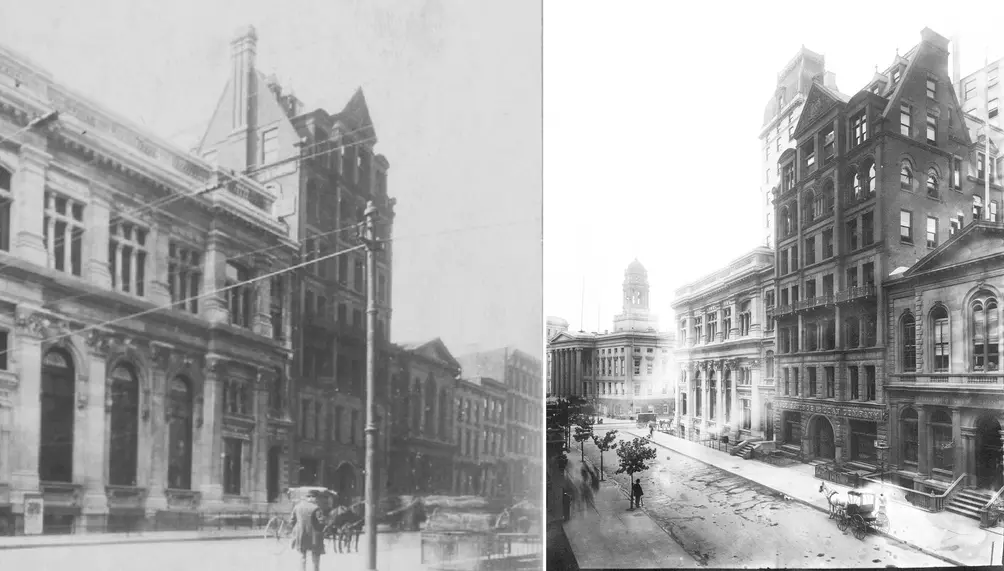 The commercial building at 186 Remsen was constructed in the late 1800s when dignified architecture for our cities was the rule rather than the exception
The commercial building at 186 Remsen was constructed in the late 1800s when dignified architecture for our cities was the rule rather than the exception
To say the least, the commercial building has seen better days: A fire in 1950 destroyed its top floors and pitched roof, and the building has sat empty since 1998. Plans to demolish the structure in 2007 were narrowly averted when the previous owner agreed to shelve their plans and incorporate the building into a Bloomberg-backed Borough Hall Skyscraper Historic District (2011). Now, the new owners, Up Ventures LLC, are seeking approval from the Landmarks Preservation Commission to perform a full restoration and add modern addition to the 132-year-old beauty.
Up for review by the preservation body is a restorative design and eight-floor addition that would adaptively-reuse the building into a 37-room hotel with an acessory three-floor restaurant and terrace. HOK Architects in collaboration with HQ Architects and JHPA are leading the design and according to the LPC presentation, will replace and restore various missing stone elements, reintroduce a wrought- and cast-iron balcony, and most noteworthy, replicate the lost one-and-a-half-story mansard roof - terra-cotta pediment and all.
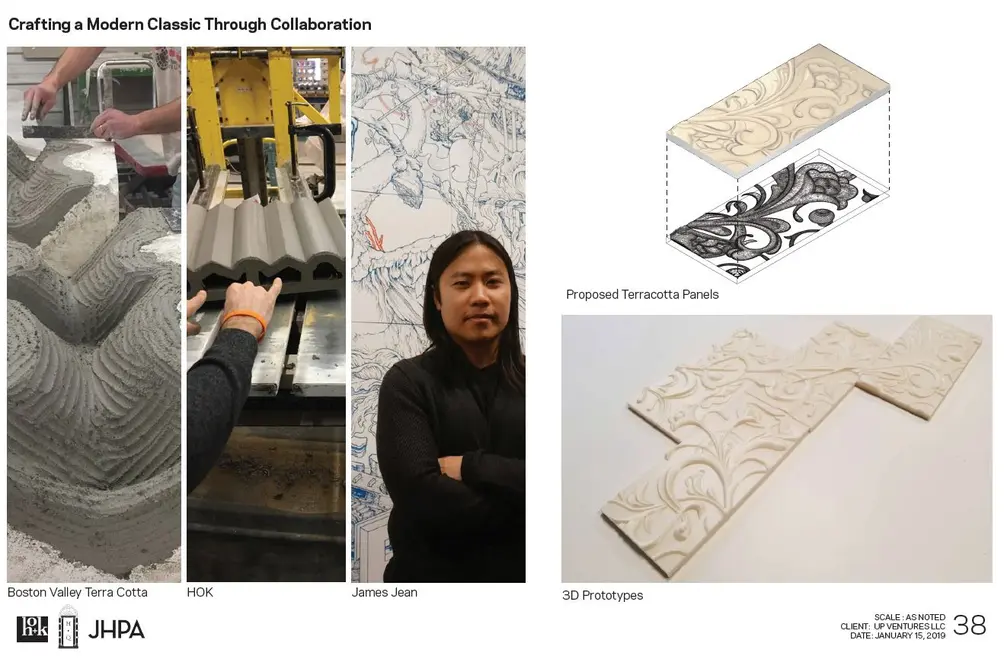 Screenshot of slide showing how fabricators will reconstruct the terra cotta ornamentation within the rebuilt pediment
Screenshot of slide showing how fabricators will reconstruct the terra cotta ornamentation within the rebuilt pediment
The rebuilt floors and new addition would more than double the height of the existing structure from 84 feet to 207 feet to the top of the mechanical bulkhead. A preliminary building application can be found here. The new addition would be positioned towards the rear of the lot, likely to minimize its visual encroachment on the historic facade below. Renderings show the new addition would feature a contrasting modern aesthetic with limestone-colored masonry and diagonal fins that would greater conceal the full-height glass windows of the hotel suites. The new addition's floors would be topped by a rooftop bulkhead enclosed in fluted, green-colored glass.
We predict the scale and design of the addition will be up for heated discussion at the hearing tomorrow which is scheduled for the morning of Tuesday, January 15. An ongoing debate regarding new construction within historic districts is how modern vocabulary can co-exist with classical architecture. Nevertheless, the restoration plans for Remsen Hall are to be applauded and stand contrary to the notion that we can't build them like we used to. Rather, we just usually choose not to. One can bet in another owner's hands and outside of a historic district, a restoration of Remsen Manor would have been deemed infeasible.
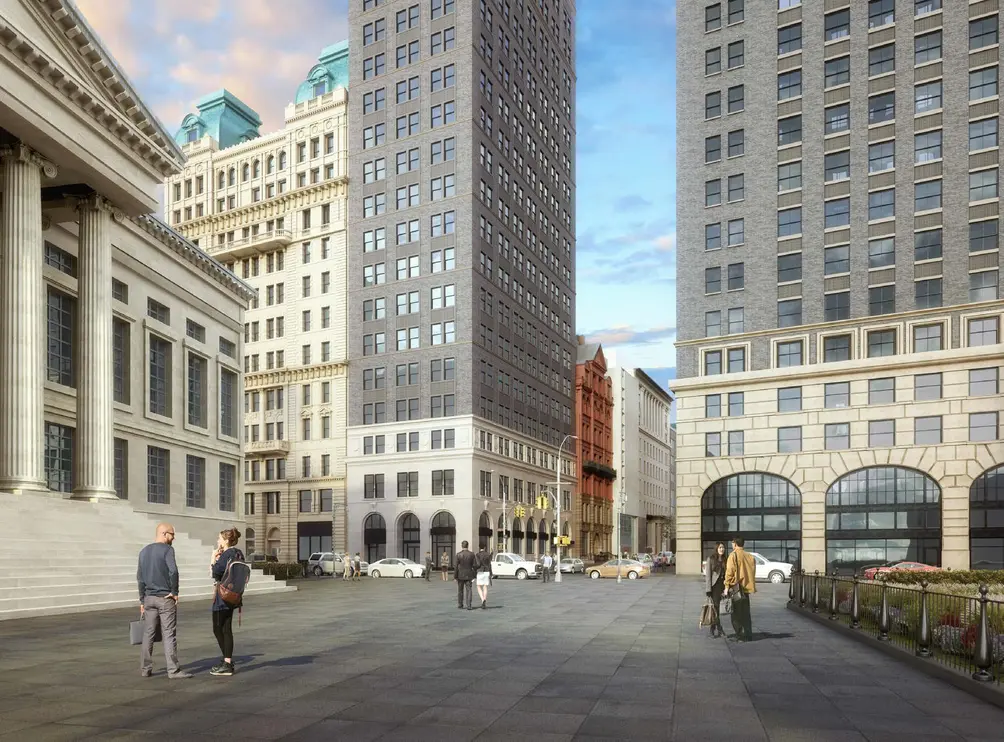 Rendering from Brooklyn Borough Hall
Rendering from Brooklyn Borough Hall
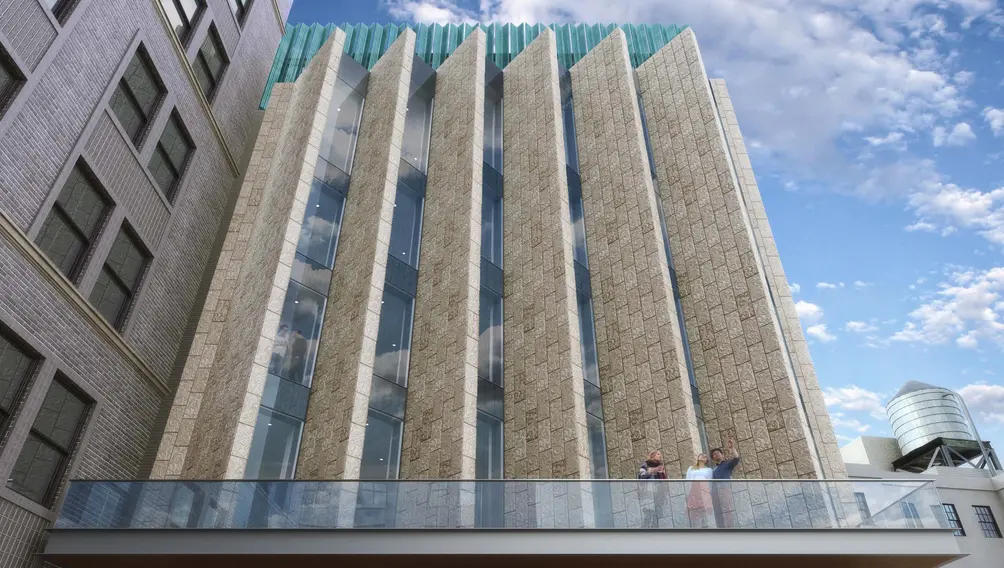 Renderings credit of Up Ventures / HOK Architects
Renderings credit of Up Ventures / HOK Architects
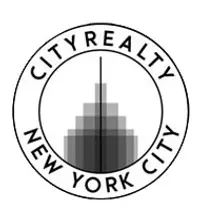
New Developments Editor
Ondel Hylton
Ondel is a lifelong New Yorker and comprehensive assessor of the city's dynamic urban landscape.

 6sqft delivers the latest on real estate, architecture, and design, straight from New York City.
6sqft delivers the latest on real estate, architecture, and design, straight from New York City.
